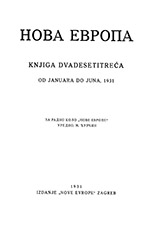
Šta je danas stvarno rat
Izvod iz jednog članka u »The Saturday Evening Post« od 11. avgusta 1928 u Filadelfiji. Prema »Die Auslese« za februar 1929.
More...We kindly inform you that, as long as the subject affiliation of our 300.000+ articles is in progress, you might get unsufficient or no results on your third level or second level search. In this case, please broaden your search criteria.

Izvod iz jednog članka u »The Saturday Evening Post« od 11. avgusta 1928 u Filadelfiji. Prema »Die Auslese« za februar 1929.
More...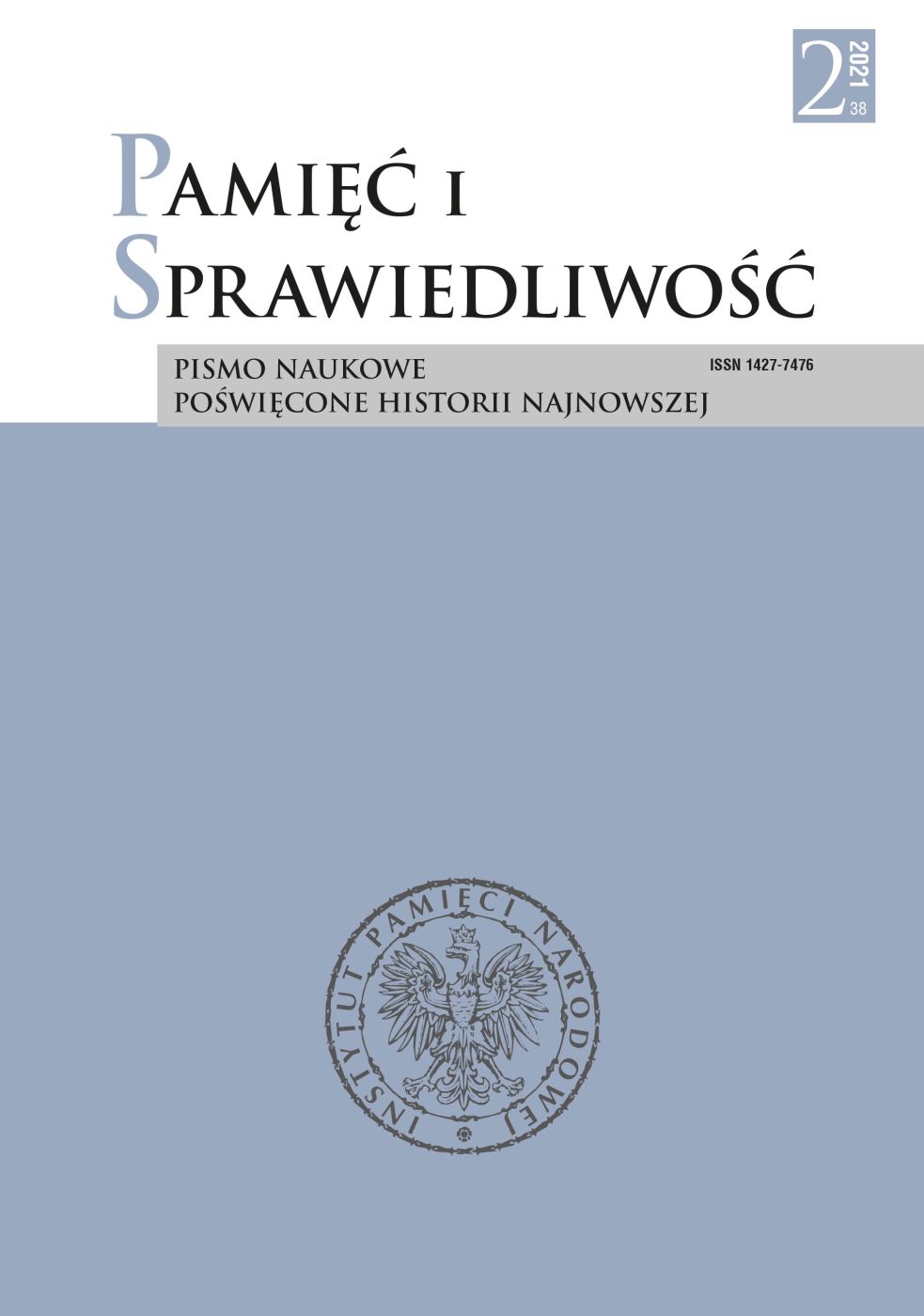
In November 1918, only part of the Polish lands were able to enjoy independence. Whereas the north-eastern areas of the pre-partition Polish-Lithuanian Commonwealth were still under German occupation and had to wait several more months for independence. This was related to the military and political situation in this part of Europe, where Germany had at its disposal serious military forces, still maintaining discipline and combat capability. It should also be noted that the occupation system in the area subordinated to the Commander of the Eastern Front (Oberbefehlshaber Ost-abbreviated as Ober-Ost) was much more repressive and oppressive for the inhabitants than, for example, in the General Governorate of Warsaw. The occupation authorities conducted ruthless economic exploitation of the occupied territories. The inhabitants were subjected to strict control. A ban on political activity and strict censorship of the press and all publications were introduced. Public gatherings were banned and restrictions were placed on the movement of the population.
More...
One of the main areas of struggle between the reborn Polish state and Bolshevik Russia was the territory of Belarus. In 1919–1920, the war swept through these lands several times. The Byelorussians’ attitude to the warring sides was varied. At least part of the Belarusian community took the side of Poland. In October 1919, a group of Byelorussian activists cooperating with Poland obtained Józef Piłsudski’s consent to form Byelorussian military units as part of the Polish Army. The organisation responsible for the formation of Byelorussian units was the Byelorussian Military Commission (BKW). Byelorussians were Poland’s first allies in the war with Bolshevik Russia. Polish-Byelorussian cooperation in the formation of Byelorussian units encountered numerous difficulties and, consequently, did not bring the expected results. In the face of the Red Army offensive in summer 1920, the Byelorussian Military Commission was evacuated to Łódź, where it continued its activities until the beginning of 1921. The peace treaty in Riga (March 1921) finally resolved the liquidation of the Byelorussian Military Commission and the Belarusian units within the Polish Army.
More...
After the end of the Russian/Soviet-Georgian war in February–March 1921, Georgia lost its independence and was occupied by Soviet Russia. Information about this war was collected, among others, by the Information Desk of the Second Branch of the General Staff of the Polish Army. The information prepared by the Information Desk was compiled at regular intervals (every two weeks). They covered, among other things, the Russian-Georgian war of 1920 and the establishment of Soviet power in Georgia. Branch II of the General Staff relied on information of official and unofficial origin. In the studies prepared by Branch II of the General Staff of the Polish Army it is difficult to find information that would be unknown to Georgian historians, but these studies help to clarify some detailed issues. These studies are interesting for two reasons. First, the information available to the Polish Army General Staff indicates how it was informed. Second, it is important to what extent the information in these Polish studies corresponds to reality. The very fact of including Georgia-related issues in these documents testifies to the importance of Georgia and, more broadly, of the whole South Caucasus for the Polish authorities. The first information about the Russian-Georgian war appeared in the study, which discusses the situation as of 1 March 1921. The last news mentioning Georgia’s affairs is found in a study dated June 1, 1921. The issue of the Russo-Georgian War and the establishment of Soviet power in Georgia was discussed in five studies. Except for minor and insignificant inaccuracies the whole process was described correctly. The main conclusion – the coup d’état and the establishment of Soviet power with the help of the troops of Soviet Russia – is also correct. Although Georgia was formally an independent republic after the establishment of Soviet power, in reality it was occupied and the Red Army was stationed on its territory. The information gathered in the studies discussed above confirms that the General Staff of the Polish Army was well informed on the Georgian question. The information about the events that took place in Georgia in 1921 confirms the interest of the Polish military and probably also political authorities in this region, especially Georgia.
More...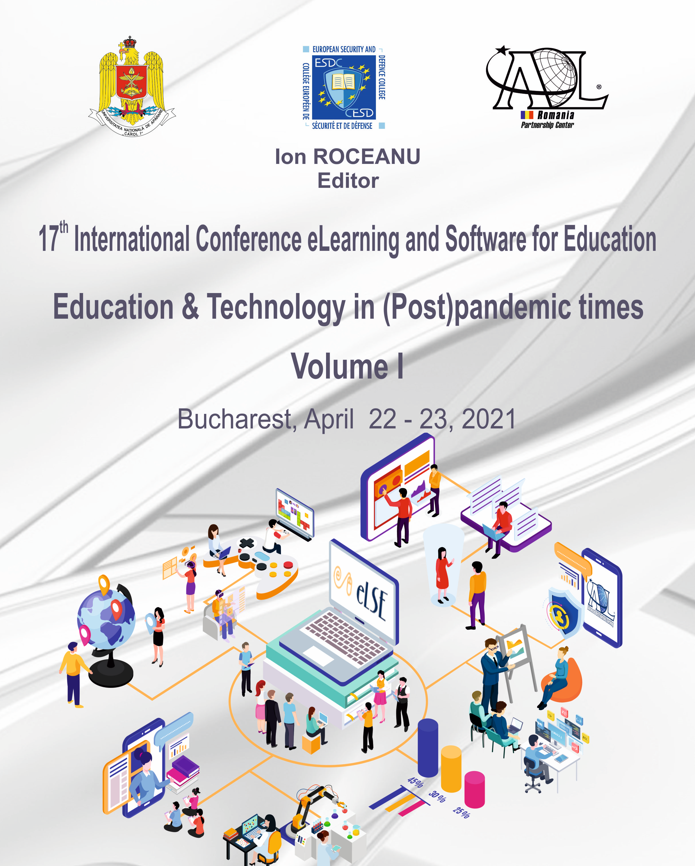
Innovation in any field is now more than ever one of the most delicate and challenging topics of the 21st century. The multidimensionality of the contemporary reality results from understanding the connections made between the societal domains through the actions of the actors involved in the field of security. This requires redefining the specialist in the field of national security and implicitly the educational system designed according to the model of the connections between the societal fields. Starting from the hypothesis that the reality of the relations existent in a system of systems on societal fields, involves three directions of development of the military specialist: the military analyst, the military planner and the military decision maker, we resorted to an extrapolation of the concept of “soft systems methodology in the field of military design thinking”. Establishing the reference database, training and working with the analysis tools are only some of the fundamental components that underlie the training of the military specialist in the process of making the best decisions in a crisis situation. Obtaining an expected result or achieving the desired end state in a military operation implies going through the algorithm of identifying the connections between the objectives established in the planning process. Risk management in a military operation in a societal context requires the positioning of the military specialist in the middle of a system of educational systems based on the concept of collaborative work on the E-learning platform as a projection of the connections of the societal fields in the area of security.
More...
This article comprises a synthesis of eEducation and eTraining trends that have influenced educational processes in general, with a description of the ways of adapting military higher education to the paradigm of the COVID-19 pandemic. It will also highlight the degree of resilience of the academic environment to these trends, in order to identify innovative teaching-learning solutions adapted to a field as specific as the field of intelligence and military sciences. There has been an increase in the share of the use of eLearning technologies, which have become common alternatives to the classic teaching-learning process to which more and more users have adapted. These technologies have determined the identification of new teaching-learning methods that reduce the quantitative and qualitative differences of the educational processes carried out in specific conditions. The novelty of this approach consists in identifying teaching-learning models with a potential for adjustment in the context of intelligence and military sciences and adapted to the fields of eEducation and eTraining. The eEducation in the military field aims to create a permanent behavioral change in participants in the teaching-learning process through the transmission of knowledge through innovative technologies. The eTraining aims to obtain certain skills, performing an exact task by using a specific technology. Through eTraining, participants in this process are allowed to acquire a certain skill. However, this requires earlier assimilation of theoretical information and further practice in reality. These teaching-learning models must meet the specific needs of the field of intelligence and military sciences, which will thus align with the trends of evolution of the methods specific to the fields of eEducation and eTraining used in related fields.
More...
The pandemic crisis started in the middle of the last academic year and disrupted timetables and programs designed months in advance. This forced all Schools and Universities to quickly reorganize all the didactic activities in a different way to meet the new needs. In the field of Security and Defence Higher Education it was necessary to design new models of teaching and training: officers, in order to be able to operate in very complex national and international contexts, cannot postpone training and could not lose, in terms of quality, their specialized education. This sudden change was made more difficult by the fact that the officers’ preparation includes theoretical and practical activities. In this paper, we analyze the measures adopted by the University of Turin, in cooperation with IT-Army Education and Training Command and School of Applied Studies, for military and civilian students of the Bachelor Degree and Master Degree in Strategic Sciences. The a priori presence of a Digital Learning Environment, already used as a support to the face-to-face teaching, was very important and allowed to adopt quite easily flexible digital methodologies in distance, blended and hybrid teaching and learning. Nonetheless, it was fundamental to support and train teachers to develop more digital competences and produce new interactive materials, and to strengthen the infrastructures in terms of hardware, software and updating of the classrooms. We discuss this transition by using students' and teachers’ answers to two questionnaires and through the analysis of students' activities, difficulties encountered, and solutions found. The outcomes in such a challenging and demanding context are generally positive and offer new opportunities and new perspectives for the future of Security and Defence Higher Education.
More...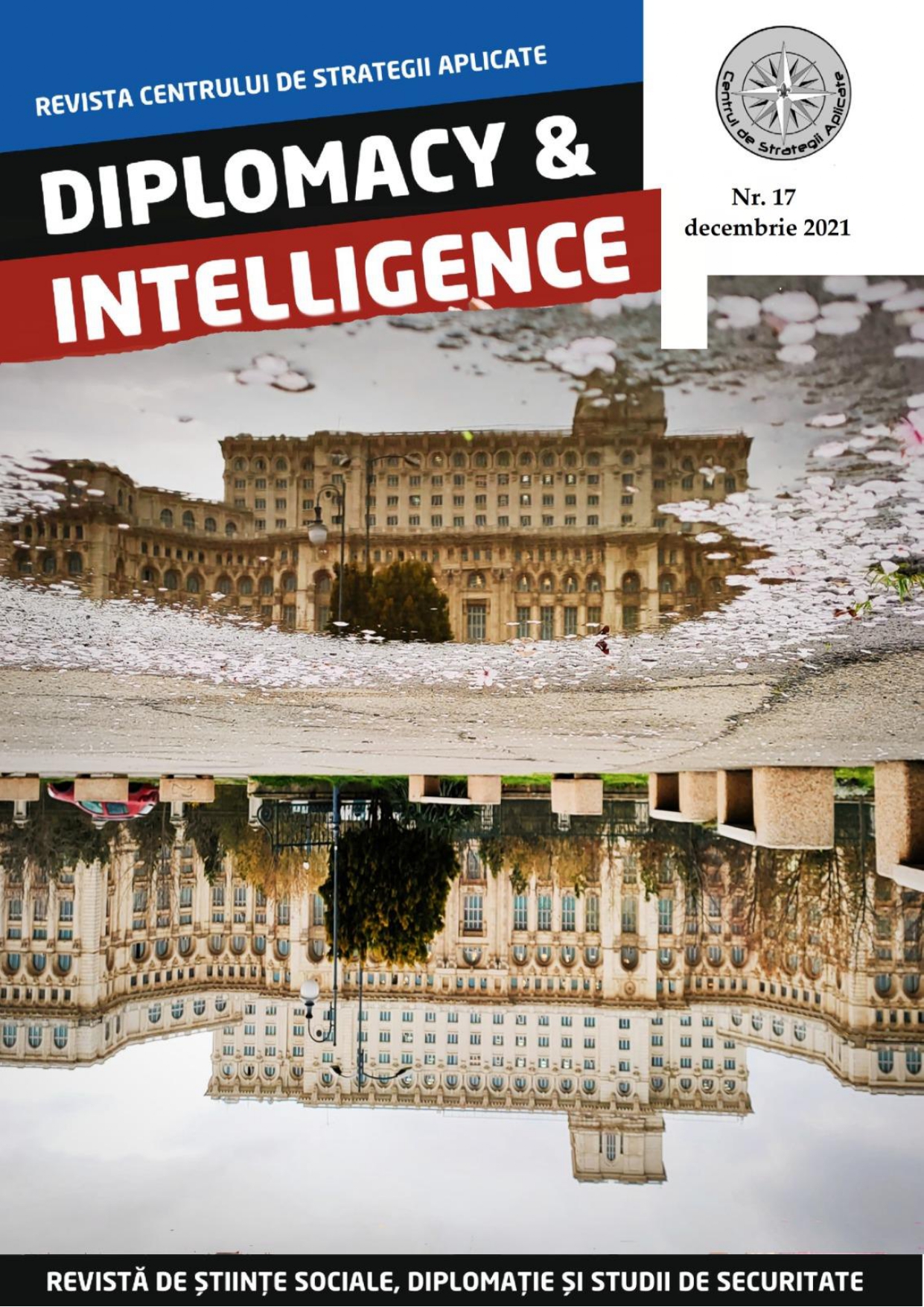
The history of mankind has been built over time like a puzzle, characterized by a succession of placement and matching of a multitude of pieces, events through which we can learn about our past, explain the present and draw the future. This chronology of humanity also reflects the permanent emergence of challenges and problems, which turn into differences between progress and stagnation, evolution and involution, from humanity to the human condition, therefore, globalization cannot annihilate multiple identities. In this article we approached globalization, presenting some theoretical aspects, but also the phenomenon of globalization, identity and the clash of civilizations in Huntington's vision, without wanting that this analysis to be a praise for neither concept.
More...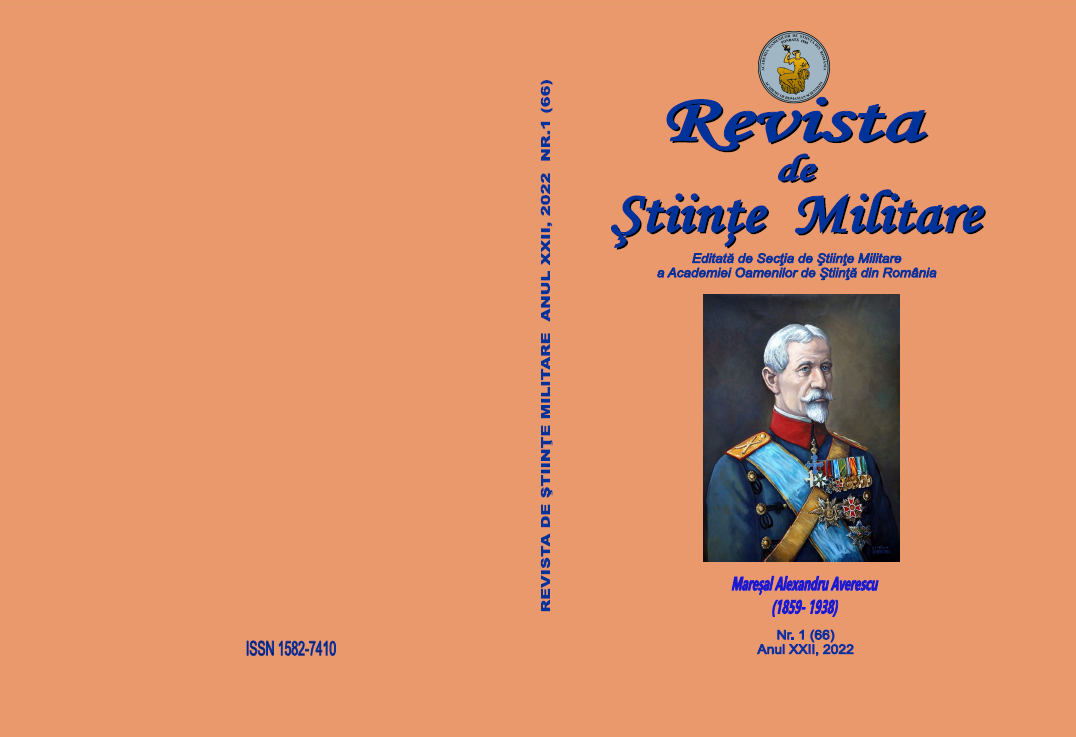
In this article, the author briefly presents some of the more important aspects of "The Role and Place of Informational Systems and Technologies in Current and Future Military Conflicts," taking into account lessons learned from recent military conflicts that have taken place in recent years, including (although partially) from the war launched by the Russian Federation on 24.02.2022 against Ukraine. I hope that the political and military authorities in Romania will study and deepen the realities of this unfortunate war, drawing the necessary conclusions for the Romanian Army and for our entire society.
More...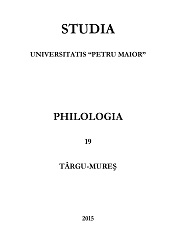
There have been numerous ways in which intercultural education has been conceptualized, but most definitions focus on the abilities to accurately understand and act accordingly in a cultural context that is different from one’s own. We find that one of the most important dimensions of intercultural education is the ability to effectively participate in interactions of all sorts, with members from other cultures or within the social parameters of another culture. Thus, we have identified an increased need to acquire intercultural communication skills, by developing intercultural competence, alongside and as an integrated part of the language. Through this paper, we intend to highlight aspects related to the concept of intercultural education and of the communication thereof, focusing on its dimensions, skills to be acquired, and the modalities of acquiring and developing intercultural competence in the military academic environment. We will conclude by reiterating the importance of intercultural communication in the context of the “global village” of the 21st century, and especially in the military environment, as it is a requirement for all military and civilian personnel to be able to interact with people from other cultures, as part of their profession.
More...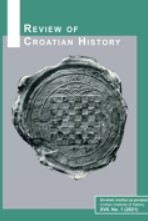
The main goal of this paper is to analyze the strategic role of Cistercian abbey of Blessed Virgin Mary in Topusko (medieval Toplica) in anti-Ottoman defense during 16th century, especially because it is rather exceptional of usage sacral complex in anti-Ottoman defense system in rather long period. In order to do so it is determined and analyzed strategic importance of the monastic complex in anti-Ottoman defense line and the change of it according to ever going Ottoman conquest of new territories, i.e. approaching of the bordering line. Furthermore, the organization of defense of the rather large estate of Topusko abbey as well as the changes of the monastic fortifications are addressed. Even more, the role of the commendatory abbots of the abbey, as well the serves of the abbey, in the larger efforts in composing and functioning of the anti-Ottoman defense line are analyzed. Finally, the proximate time and context of the final abandoning of the former Cistercian abbey is determined.
More...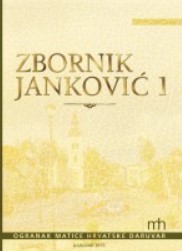
This article portrays the basic structure of the Territorial Defense of the Western Slavonia SAR during 1991 and the circumstances of its disappearance during the end of that year. Territorially speaking, this defense covered the area from Gradiška – Novljana Posavina to Bilogora and Papuk mountains. However, keeping in mind that the Janković magazine primarily covers the middle and northern portion of Western Slavonia, the article will not show the defense structures in the Gradiška – Novljana Posavina itself. Also, the defense structures mentioned here persevered, unlike those in the north, which were destroyed as a result of Croatian victories. As was the case of SARs in Krajina, the Western Slavonia SAR had the TD, along with the police, as the basic military organization of rebelled Serbs.
More...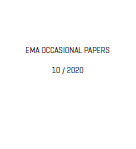
Kaitseväe Akadeemia (KVA) on Kaitseväe juhataja vahetus alluvuses riigikaitseline rakenduskõrgkool, mille põhiülesanne on valmistada ette Kaitseväe ülemaid ja arendada sõjateadust, et tagada Kaitseväe jätkusuutlik juhtimine. KVA tegevusvaldkonnad põhiülesande täitmisel on järgmised: 1) kõrgharidus- ja kutseõpe; 2) täienduskoolituste tegemine; 3) riigikaitsega seotud teadus- ja arendustegevus. Aruanne keskendub 2019. aasta tulemustele viimati nimetatud tegevusvaldkonnas.
More...
Teaduspõhise võimearenduse toetamiseks vastutab KVA nelja üldpädevuse ja neile tuginevate uurimissuundade eest: 1) eestvedamine, 2) operatsioonianalüüs, 3) ressursihaldus ja 4) tehnoloogiad. Need üldpädevused suunavad teadus- ja arendustegevust ning esitavad sellele järgmisi kaalukaid ülesandeid. 1. Eestvedamine üldpädevuse ja uurimissuunana hõlmab suutlikkust luua ja analüüsida võimelünga lahendeid juhtimisobjekti, -meetodite, -õppe ning kasutatavate vahendite ja meetodite vaatepunktist ning anda hinnang, kas ja mil määral kõrvaldavad uurimisprojektides leitud lahendused võimelünga. 2. Operatsioonianalüüs üldpädevusena on sõjateaduse valdkond, mille põhifunktsioon on toetada juhtimisotsuseid ja mis võimaldab võrrelda alternatiive teaduslike analüüsimeetodite abil. Operatsioonianalüüsi saab kasutada kõikidel sõjapidamistasanditel: 1) strateegiatasandil otsuste langetamisel, nt sõjalise kaitse strateegia arendamisel, ressursside olemasolu hindamisel, väevõimete kombineerimisel ja ajakohastamisel või võtmeülesannete määramisel sõjalise kampaania üleselt; 2) operatsioonitasandil väeüksuste hetkeseisu hindamiseks, inimvara planeerimiseks, logistika jms prognoosimiseks või oma jõudude ja vastase kriitiliste haavatavuste leidmiseks; 3) taktikatasandil sihtmärgistamiseks ja jõudude võrdluseks, optimaalse teekonna leidmiseks jms. 3. Ressursihaldus üldpädevuse ja uurimissuunana hõlmab suutlikkust luua ja analüüsida võimelünga lahendeid 1) finantsküljest ning anda hinnang, kas lahendeid on võimalik saavutada kavandatud eelarvega; 2) isikkoosseisu vaatepunktist ning anda hinnang, kas lahendeid on võimalik saavutada eeldatud isikkoosseisuga; 3) järjestatud ja sünkroniseeritud tegevuste vaatepunktist ning anda hinnang, kas lahendite saavutamiseks kuluv aeg on vastuvõetav. 4. Tehnoloogiad üldpädevuse ja uurimissuunana hõlmavad suutlikkust 1) analüüsida võimelünga lahendeid soorituse ja taktikalis-tehniliste parameetrite vaatepunktist; 2) anda hinnang, kas ja mil määral lahendid võimelünga kõrvaldavad ning 3) pakkuda välja tehnilisi lahendusi, kaasates ja kasutades vajaduse korral koostöövõrgustiku partnerite pädevust.
More...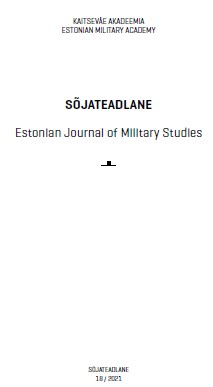
The weaponisation of artificial intelligence (AI) is upending traditional warfare as the development of autonomous weapon systems (AWS) increases in pace and sophistication. As a result, the concept of a weaponised AI where a weapon system that, once activated, can select and engage targets without human intervention, creates serious complications and challenges for international humanitarian law (IHL) enforcement. It also raises fundamental ethical questions as to whether people can delegate life and death decisions and accountability to artificial agents. Many authors have voiced concerns on this subject but thus far a comprehensive presentation of a deeper ethical considerations related to AWS is lacking. This article uses a systematic literature review to provide an overview of the most common arguments for and against using AWS. The results from the review indicate that compliance or non-compliance with the core principles of IHL are the most prevalent concerns in the discourse. The lack of accountability also makes for a strong deontological argument against using AWS, although normative ethics represents only half of the theoretical argumentation.
More...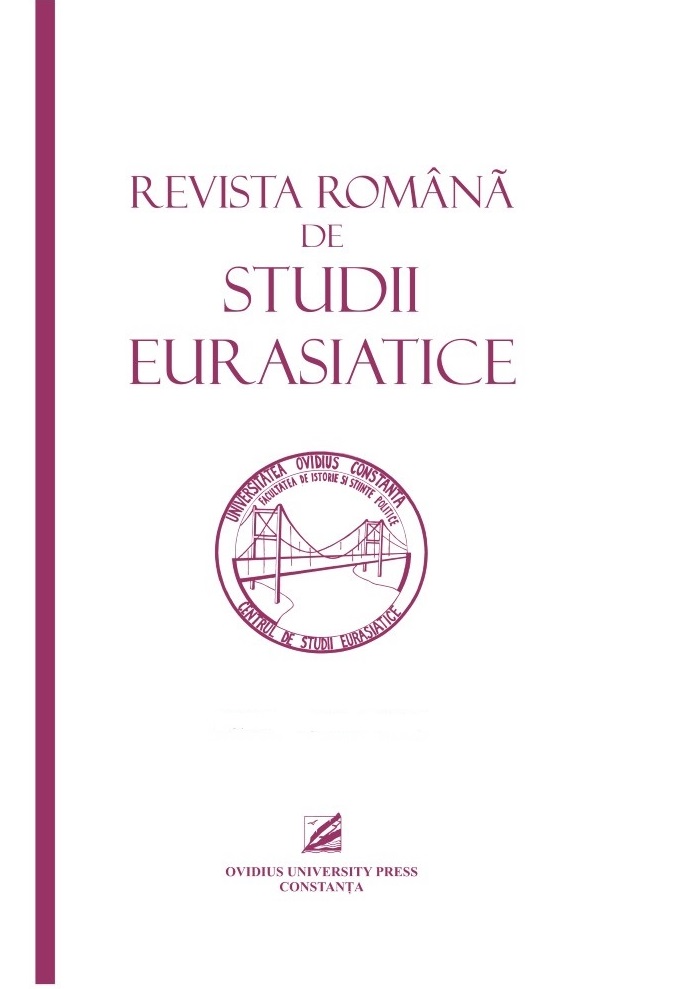
Without the slightest doubt, the contribution that Romanian state has brought to Afghan society development enjoys a major recognition and capitalization worldwide. This theoretical and practical involvement of Romanian army in Afghanistan operations theater was figured in obligations and benefits as a result of belonging to such an international project. The exceptional performance of Romanian staff in several thousand missions successfully completed has demonstrate its ability to stand out with its partners and to implement fighting techniques and tactics in missions of great complexity and commitment. It is important to specify and recognize Romania’s role in major projects established at a high level by NATO member states, its loyal involvement in large-scale plans carried out positively at Kabul International Airport or in Afghan provinces. Despite the modest technical endowments of military arsenal, Romanian army has highlighted its ability to self-sustain and achieve strategic transport for moving contingents to various operations theaters throughout Afghanistan. Romania's participation in world conflicts management, in the fight against terrorism and its effects, supposes first of all a participation in war prevention, in ensuring stability at regional and global level and in consolidating security environment that allows the development of states democratic principles, borders inviolability, economic and social development, progress and prosperity etc.
More...
The Todt’s Organisation was a militarised organisation of great importance for the armament potential of the Third Reich. The problems discussed in this text remain on the margins of interest of Polish historiography, so the article aims primarily to fill this gap. Due to the wide and multifaceted scope of this issue, the author decided to present the TO in the first phase of its functioning, from its genesis connected with the motorway construction programme to its involvement during the French campaign of 1940. The period encompasses the formative phase and the restructuring of the organisation under the conditions of the war conflict. The TO in the period discussed underwent significant structural changes, becoming not only an efficient construction organisation but also an inseparable element of support for sapper units and efficient Wehrmacht logistics.
More...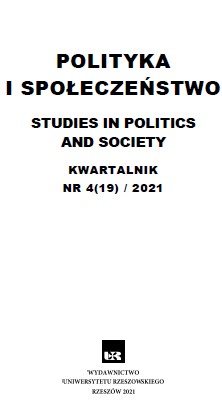
In this article the authors analyze the constitutional provisions and regulations contained in specific laws related to the competences of the President in the field of national security. The aim of the article is to show what real influence the President of the Republic of Poland has on the Polish army and national security. The President performs his duties in the field of authority over the armed forces through the Chief of National Defence.
More...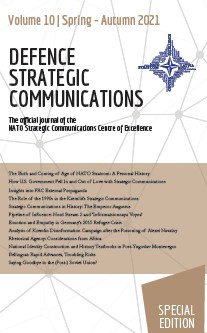
Perilous is perhaps too strong a word for an endeavour that did not involve actually getting shot at, although some metaphorical backstabbing was an occupational hazard, and it could be a career killer. Nevertheless, Machiavelli’s quote is largely apt. His work The Prince — often seen as a textbook for cynical and cunning manipulation, hence Machiavellian—was in fact a world-weary body of advice to a young prince on the realities of rule. As such his warning about the perils of ‘change management’ is an all too accurate description of the project that has been bringing Strategic Communications (StratCom) into the heart of NATO.
More...
Review of: Cătălin Robertino Hideg, Daniela Georgiana Gole, BIOTERORISM Introduction to the issue of bio-terrorism: origins, manifestations, causes, economic and financial substratum, volume 1, Meteor Press, 2021. The issue of bio-terrorism: origins, manifestations, causes, economic and financial substratum.
More...